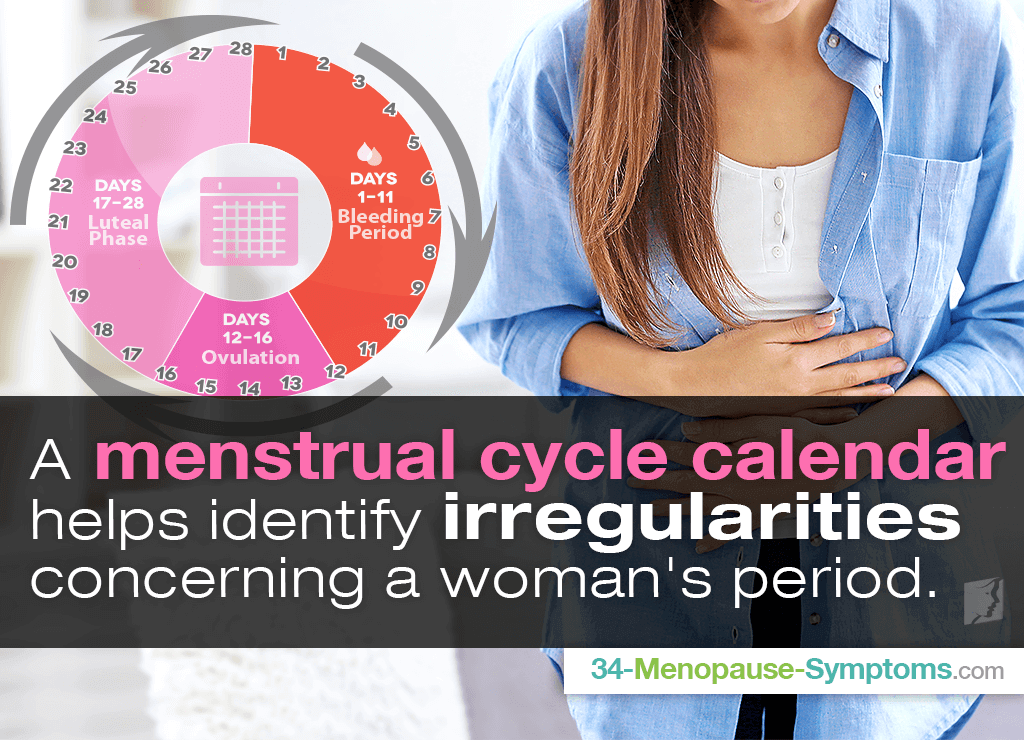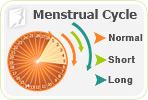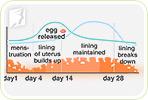The duration of a menstrual cycle throughout a woman's reproductive life varies from 21 to 35 days, with up to seven days of menses. Once a woman enters the menopausal transition around her early to mid-40s, she may notice the onset of various symptoms, including irregular periods. Keep reading to learn more about how to keep track of irregular menstrual cycles with a period calendar to take action for your own health today.
What is a Period Calendar?
A menstrual cycle calendar is a chart that helps identify irregularities concerning a woman's period. These irregularities include anything from spotting and light or heavy periods to changes in menstrual cycle patterns, such as missed menses and shorter or longer cycles.
Keep in mind that menopause is diagnosed when a woman has gone 12 consecutive months without a menstrual cycle. Therefore, use of this calendar will allow for easier recollection of period history in order to make an official diagnosis.
Downloadable Calendars for Tracking Periods
There are various options available for women to use as references for observing periods. They may either do so via online menstrual trackers or manually with a downloadable calendar:
Daily Perimenopause Diary. This monthly menstrual cycle calendar allows women to track not only periods, but other menopause symptoms they may experience to varying degrees as well.
MenoNote® Menstrual Calendar. With symbols already created for women to easily register their menstrual patterns, this downloadable option covers a whole calendar year.
How to Best Use a Period Calendar
Perimenopausal women should use calendars for at least 6 to 12 consecutive months. They should record any noteworthy and characteristic information about their periods consistently throughout these months to obtain the most accurate results.
Moreover, if data is recorded manually, women should look to implement specific symbols for each menstrual irregularity. This will help them easily detect any possible trends and gather necessary information together quicker when needed.
In general, it is important to speak with a healthcare provider about all menstrual irregularities experienced during this transition.
Benefits of Tracking Your Period
Using a period cycle calendar allows you to monitor overall health and take note of what's happening in your body. Making use of one will make it easier to find out which menopausal symptoms - such as breast tenderness, cramping, bloating, etc. - may coincide with menstrual patterns.
Tracking your period also helps you rule out other reasons for irregular periods. For example, noticing bleeding after intercourse might signify more severe issues that should be addressed immediately.
Another benefit of tracking your period is that it creates a compilation of concrete results that can be brought to your doctor for easier diagnosis. As aforementioned, the menopause date is diagnosed once a woman has gone 12 consecutive months without a period.
Key Takeaways
All in all, period calendars are handy tools for perimenopausal women to utilize to best keep track of their menstrual cycle patterns as they progress through the menopausal transition.
There are a variety of options available, from online trackers to downloadable versions. For best results, you should use a menstrual cycle calendar for at least 6 to 12 consecutive months or until menopause has been diagnosed. Keep in mind that tracking periods will not only allow you to be completely prepared for your next doctor appointment, but also help you take control of your own health for the better.
Now that you know how to track irregular menstrual cycles, discover more about possible treatment options for irregular periods to finally alleviate symptoms once and for all.
Sources
- The Centre for Menstrual Cycle and Ovulation Research. (2003). Daily Perimenopause Diary. Retrieved August 14, 2018, from http://www.cemcor.ubc.ca/sites/default/files/uploads/daily_perimenopause_diary.pdf
- The North American Menopause Society. (2015). Menstrual Calendar. Retrieved August 14, 2018, from https://www.menopause.org/docs/default-source/2015/menonote-menstrual-calendar-english.pdf




